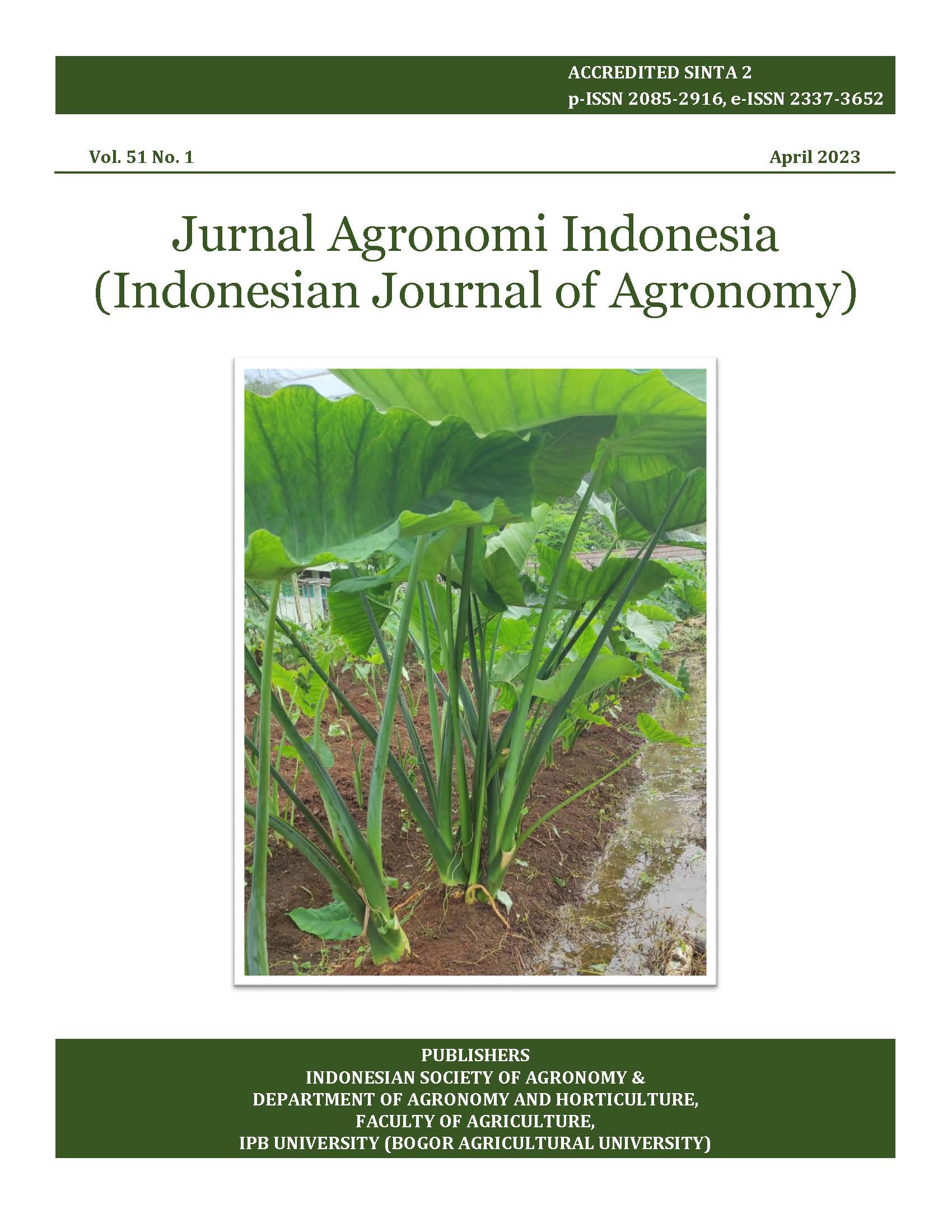Dominance of Cyperus kyllingia Endl. at guava orchard and its possible resistance to glyphosate
Abstract
Weed resistance, indicated by increasing the level of herbicide for control, might arise due to the continuous use of similar herbicides in the long term without any herbicide rotation. The objective of this research was to evaluate the status of dominant weeds in a guava orchard to determine weed control strategies. The research was carried out from November 2020 to June 2021 at Agribusiness Technology Park IPB, Bogor. Vegetation analysis to define dominance was carried out at 4 blocks using the square method. In each block, five sampling points were randomly selected. Seeds of C. kyllingia were collected and planted as many as 25 seedlings in polybags. Glyphosate herbicide was applied onto C. kyllingia in 3 replications using 9 doses, i.e., 0 (D0), 60.75 (D1), 121.5 (D2), 243 (D3), 486 (D4), 972 (D5), 1944 (D6), 3888 (D7), and 7776 g ha-1 (D8). C. kyllingia mortality percentages were analyzed using linear regression to obtain LD50. The results showed that the dominant weed was C. kyllingia. Block 4 showed the highest significant LD50 value at 759.11 g ha-1 with a resistance index of 2.67 (reduced sensitivity). The presence of dominant C. kyllingia was identified only at block 4, indicating the dominance could correlate with increasing resistance of the particular weed.
Keywords: doses; EPSPS; glyphosate; LD50; sedges; vegetation analysis













